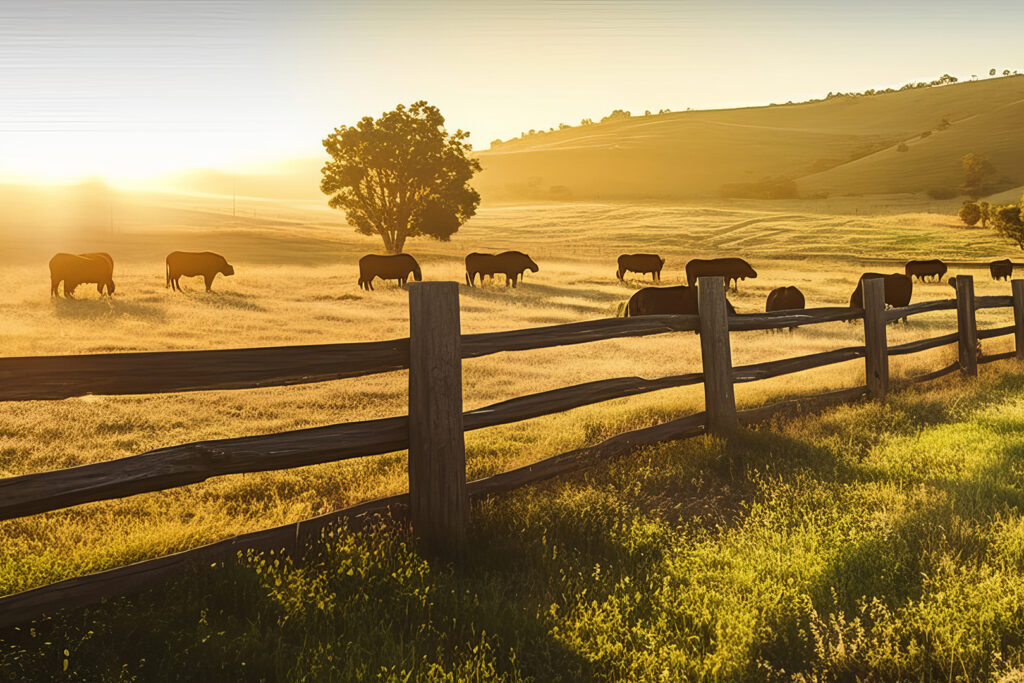Texas A&M VMBS, AgriLife Research Build Veterinarian Recruitment Toolbox To Address Underserved Texas Communities
Story by Blair Fannin, Texas A&M AgriLife

In communities throughout Texas and across the United States, the veterinarian serves as the cog of livestock and animal care, yet many rural areas continue a historical pattern of being underserved.
To help address recruitment of veterinarians to critically underserved areas across the country, a collaborative effort between the Texas A&M School of Veterinary Medicine & Biomedical Sciences (VMBS) and the Institute for Infectious Diseases will build a toolbox for counties to enhance recruitment and retention efforts of veterinarians to small town communities.
The three-year project is funded by a U.S. Department of Agriculture-National Institute of Food and Agriculture grant.
“The ultimate goal of this grant is to help communities help themselves and be able to attract, recruit, and retain veterinarians. In a lot of small communities, the veterinarian is also highly involved in driving the economy and is seen as a civic leader. So, it’s really an important part of the whole community atmosphere to have a veterinarian,” said Dr. Jennifer Schleining, head of the VMBS’ Large Animal Clinical Sciences Department. “We’re thankful to the USDA for recognizing that this is a much larger issue than just training and graduating more veterinarians and that they’re giving us the tools to be able to address it from a multifaceted approach.”
Schleining is joined in the project by Dr. Dan Posey, clinical professor at the VMBS who leads outreach efforts within the school’s Veterinary Education, Research, & Outreach (VERO) initiative in Canyon, as well as Drs. Dee Ellis and Heather Simmons, from the Texas A&M College of Agriculture and Life Sciences’ Institute for Infectious Animal Diseases; together, they hope to play a leading role in solving this crisis by developing a toolbox that will help underserved communities recruit and retain veterinarians.
Community Template Project
Schleining, who grew up in a rural community and serves as co-director on the project, knows all about the need for rural veterinarians.
This project is a very meaningful way to make a positive difference both in the field of veterinary medicine and in the communities that need veterinary care most.
Dr. Jennifer Schleining
“Like Texas, there are parts of the Midwest, including my home state of South Dakota, where people drive 80 miles to get veterinary care,” Schleining said. “Conversely, there are veterinarians in rural areas who must travel similar distances, or more, to qualify for loan assistance to pay their vet school bills, receive mentorship from more experienced veterinarians, and access healthcare for themselves and their families. It can be an isolating experience when you’re establishing your practice in a new community if it doesn’t have what you need to feel supported within reasonable driving distance.”
The community template project aims to build on the supplemental loan repayment programs already in place by adding retention strategies to these recruitment efforts, Ellis said.
“Texas currently has both state- and federally funded programs to help repay part of a veterinarian’s student loan debt if they relocate to an underserved area,” Ellis said. “In the federal program, the Texas Animal Health Commission, with industry input, selects the areas each year that are designated as ‘underserved’ and then USDA reviews the applications of veterinarians to see who will actually receive a loan repayment stipend.”
Ellis said the template project is intended for small towns or communities that need a veterinarian and could be used by agribusinesses or other stakeholders looking to recruit veterinarians into historically underutilized parts of Texas or to work in food animal sectors with a shortage of large animal practitioners.
Beyond salary, the project could explore other areas of attraction, such as good schools, recreational opportunities, cultural or well-being environments, and peer or mentorship interactions.
Retention In A Small Town

Posey also brings a unique perspective as a co-director on the project.
“When you look at the rural dilemma, there are towns that are getting smaller, but there are also rural towns that are getting bigger,” Posey said. “Part of what we aim to find out is why. By doing this work, we can see why some rural communities, like Canyon, in the Texas Panhandle, thrive and others don’t. Once we’ve identified these things, we’ll make a toolbox to help rural areas that are shrinking to start thriving again so that they can attract veterinarians. The toolbox will serve as a blueprint to help build stronger attractions for young professionals to rural areas.”
“It’s also not just about moving to a small town; it’s about staying in a small town long term,” Ellis added.
Retention of newly located veterinarians is a big issue facing many rural communities that needs to be addressed. Processes helping to repay student loans may get a veterinarian to a rural location, but the real question is, “how do you keep them there long term?” Ellis said.
Posey said that when the research team looked at the many ways to solve the problem, it was clear that the next logical step is to help rural communities develop and grow in a way that attracts young professionals.
“To be part of such a project is an honor, because it means we’re part of the solution,” he said.
Schleining said the grant emphasizes the core tenants of the land grant university — service and commitment.
“One of the things that drew me to Texas A&M was service,” Schleining said. “This grant really gets to the heart of service and our commitment as a land grant university. It’s really fun to be able to work with a varied group of people to help address a problem that we’ve been talking about in the veterinary profession for 20 years. This project is a very meaningful way to make a positive difference both in the field of veterinary medicine and in the communities that need veterinary care most.”
###
For more information about the Texas A&M School of Veterinary Medicine & Biomedical Sciences, please visit our website at vetmed.tamu.edu or join us on Facebook, Instagram, and Twitter.
Contact Information: Jennifer Gauntt, Director of VMBS Communications, Texas A&M School of Veterinary Medicine & Biomedical Sciences, jgauntt@cvm.tamu.edu, 979-862-4216


